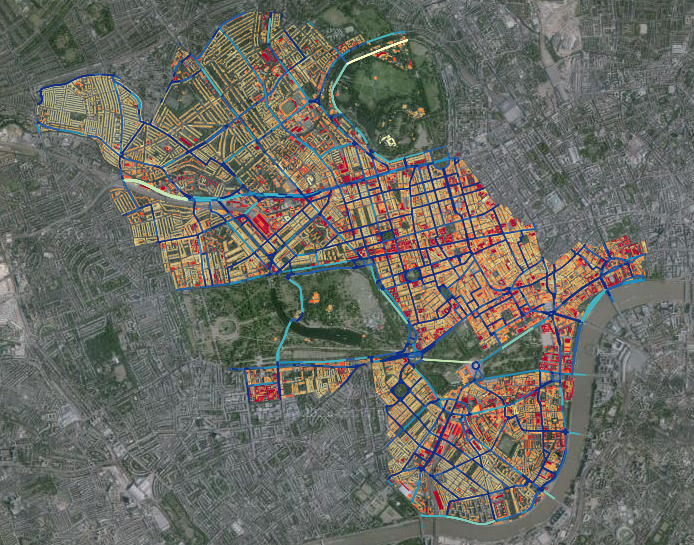
Submitted by Samantha Archetti on Mon, 30/03/2015 - 12:49
Climate change, air quality and energy security present a triad of challenges to national, regional and local governments, requiring policies to control energy use and its impact. Such challenges are most acute in urban environments, where fixed infrastructure and high densities of energy demand technological and social intervention to curb the effects of energy use.
A new bottom-up energy simulator of urban districts and cities, called CiMO, has been developed by the Energy Efficient Cities initiative (EECi), at the University of Cambridge. This cross-disciplinary project encompasses research in building and transport technologies, district power systems and urban planning. It aims to strengthen the UK's energy demand reduction capacity and lessen environmental impact in cities.
CiMO (city model) is a high-resolution exploratory tool that offers a spatially differentiated, hourly physics model of energy consumption, emissions and air quality due to buildings and transport at the city scale. It is one of the first-known initiatives to integrate engineering models of buildings, transport, and energy generation systems in an integrated manner and at high spatio-temporal resolution.It CiMO responds primarily to the challenge of quantifying carbon reduction and air quality impacts of urban design decisions over near-term time horizons (one to 10 years).
There is a compelling need has been developed to improve the analytical capabilities available to enable city councils and urban developers to spatially quantify the environmental impact of near-term changes, interim achievements and cost-benefits of changes in urban districts. This, in turn, informs the collective decision-making process and has the potential to reduce the impact of energy and environment on society. There is tool offers real value to be gained in identifying how best to deploy limited resources within districts to improve air quality, or to identify problem areas within cities.
Lack of reliable data as inputs is critical in such large-scale models, but there have been significant improvements recently. The conflation of data-deluge and stricter regulations has resulted in significantly better datasets at increasingly higher resolutions (per billing meter in the case of buildings). A notable example is the outcome of the European Performance Buildings’ Directive (EPBD) adopted by member countries in 2003; following the introduction of EPBD, new policies such as the Carbon Reduction Commitment (CRC) scheme in the UK require large organisations to meter electricity consumption at half-hourly resolution.
These datasets are augmented by geographic information services (GIS) that are now able to provide datasets of buildings and land use at very high spatial resolutions. Similar efforts in quantifying detailed characteristics of personal and public transport vehicles enable individual engineering vehicle characteristics to be represented at the fleet and urban scale.
In this sense, our project could not be better timed: we see a landscape of new sets of high-resolution information emerging, with some spatiotemporal gaps. Simultaneously, there have been big advancements in inference techniques for overcoming information gaps and ever-increasing computational capacity. It is timely for tools such as CiMO to be developed and used to inform environmental impacts of urban developments.
Our objective is to radically transform the capabilities of urban-scale energy and environmental simulation models. CiMO is demonstrative of what has been achieved from five years of EECi funding.Based on the partnerships formed through the EECi, our ambition is to be world-leaders in the development of analysis capabilities that help reduce energy use and environmental impact of cities.
Dr Ruchi Choudhary, Reader in Architectural Engineering at the University of Cambridge, teaches in the Civil, Structural and Environmental Engineering Division of the Department of Engineering . She leads the Energy Efficient Cities initiative, originally funded by EPSRC, and is a Co-Investigator at the Centre for Smart Infrastructure and Construction (CSIC).
See www.centreforsmartinfrastructure.com and www.eeci.cam.ac.uk.
Full Image caption: High-resolution combined energy analysis of buildings and transport in districts: City of Westminster, London.
The project is one of the first-known applications of bottom-up, integrated engineering modelling used to predict hourly energy use and emissions at the city scale
To read the article as it originally appeared in Infrastructure Intelligence click here
